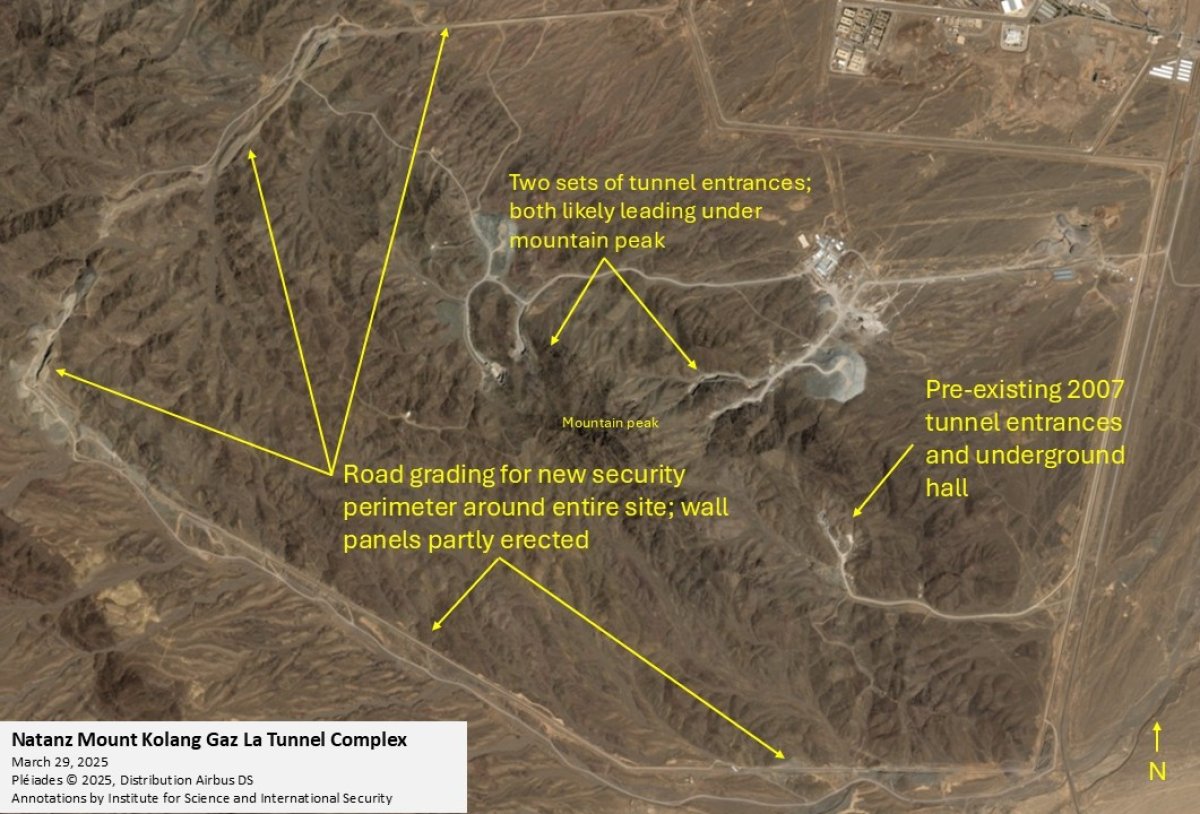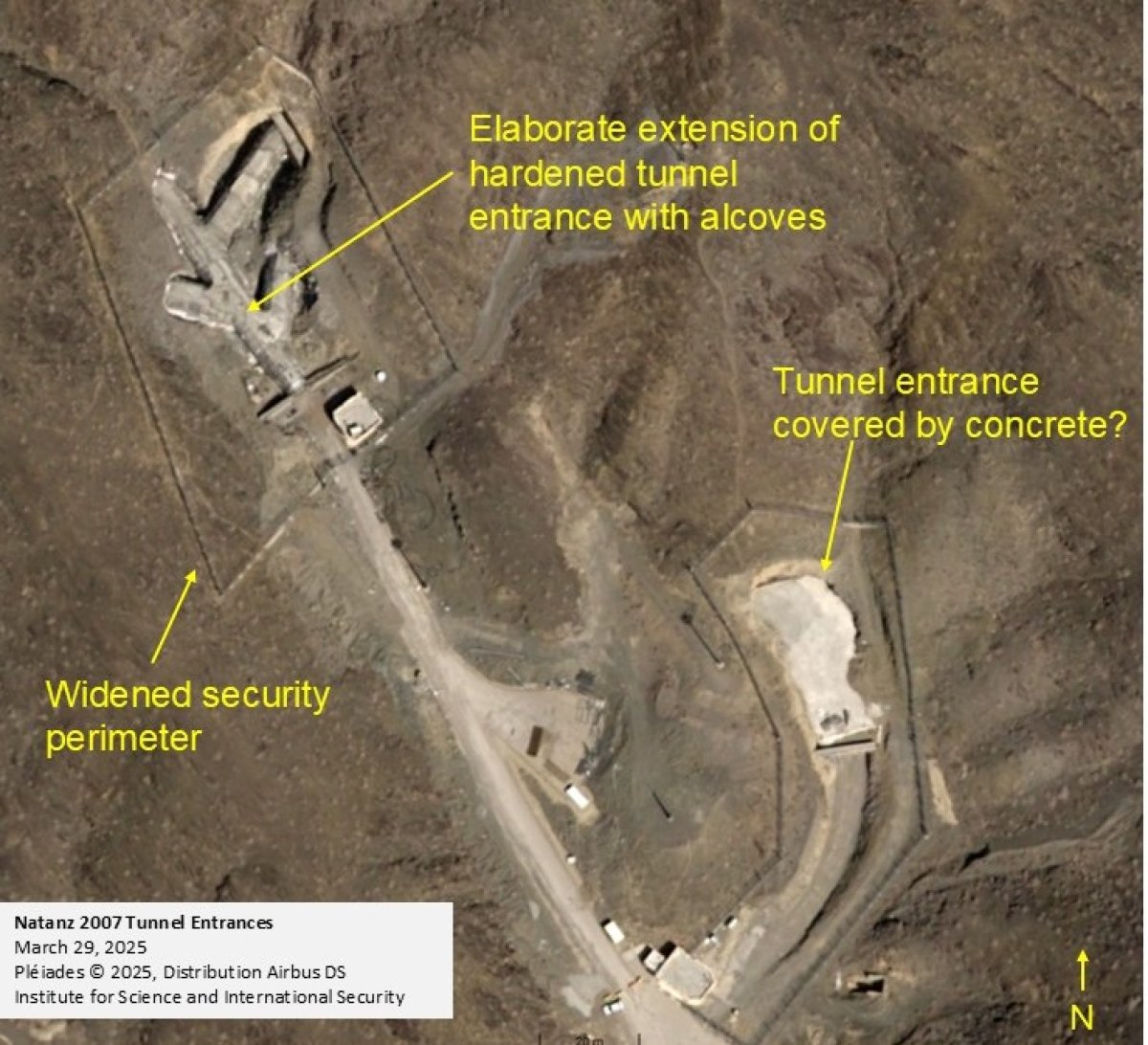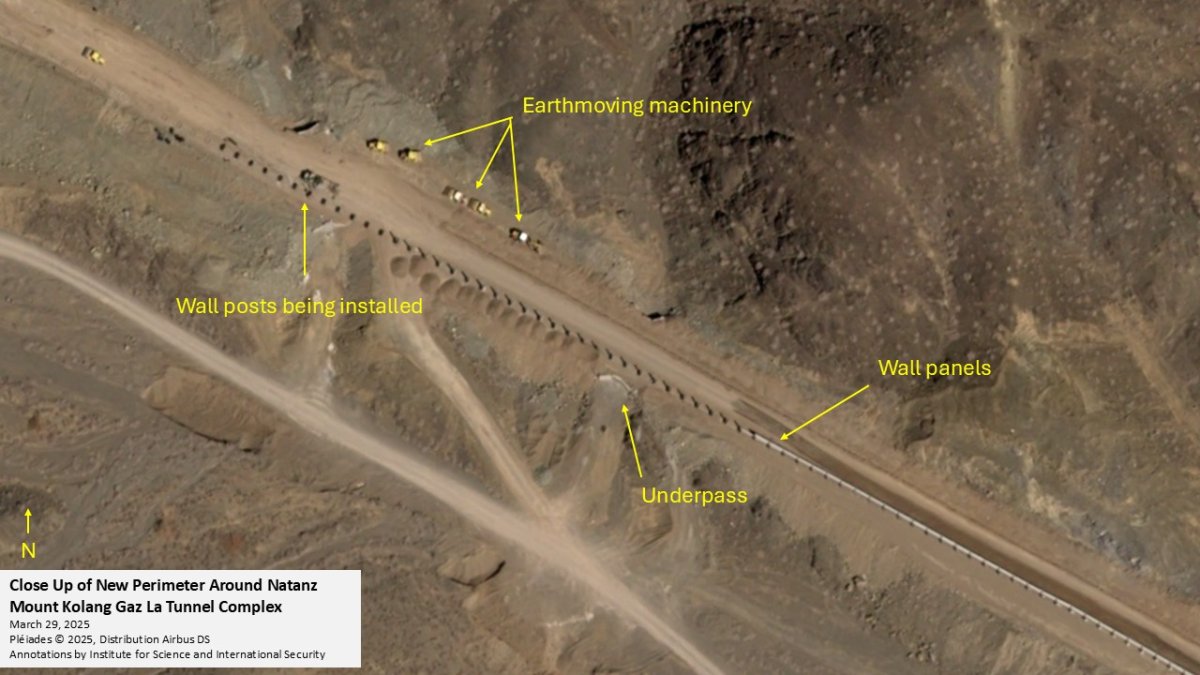New satellite imagery shows Iran reinforcing a vast underground complex near the country’s main uranium enrichment site, according to an analysis by the Institute for Science and International Security.
Newsweek has reached out to the International Atomic Energy Agency watchdog for comment.
Why It Matters
The fortification efforts come at a time of U.S. and Israeli threats of military strikes on Iran’s nuclear facilities. The United States and Iran are currently in negotiations over the Iranian nuclear program, but President Donald Trump has threatened an attack if talks fail. Israel has said it would attack alone if need be to stop Iran obtaining nuclear weapons.

Institute for Science and International Security
What To Know
Commercial satellite imagery analyzed by the Institute for Science and International Security identified ongoing construction of a fortified security perimeter around Mount Kolang Gaz La—an area south of Iran’s Natanz nuclear complex.

Institute for Science and International Security
The site includes two tunnel facilities: a new, deeply buried tunnel which could be operational as soon as this year, and an older 2007 site which has undergone major upgrades since late 2023, according to the independent nonprofit.

Institute for Science and International Security
It concluded that Iran appears to be preparing both sites for sensitive nuclear operations.
IAEA Director Rafael Grossi told reporters Wednesday that Iran has agreed to allow in a technical team of the U.N. watchdog to discuss restoring camera surveillance at nuclear sites, The Associated Press reported.
This comes as Iran warned that a potential deal could be derailed amid Israeli pressure on Washington and threats of military action. Tehran has long said it does not seek nuclear weapons but only wants research for civilian uses. Israel is widely believed to have nuclear weapons already.
U.S. President Trump has said he prefers diplomacy but hasn’t ruled out force, with his administration hardening their stance on Iran’s civilian enrichment capabilities, despite the U.S. National Intelligence assessing that Iran is not currently building a nuclear weapon.
What People Are Saying
Institute for Science and International Security: “If Iran is building an enrichment plant and did not declare it to the IAEA when it authorized construction, this would be a serious safeguards violation. In its negotiations with Iran, the United States should make clear that if Iran were to move, or has already moved enriched uranium stocks, centrifuges, or key centrifuge-related equipment to these underground facilities, this would be detrimental to negotiations.”
Iran’s Foreign Minister Abbas Araghchi on X: “Reality check: Every single milligram of enriched uranium in Iran is under full and constant IAEA supervision and monitoring.”
IAEA Director General Raphael Grossi as quoted by The Associated Press: “You know, I’m quoting from their public statements, they are adding a significant number of new (collision) cascades. And if you add to that the fact that we have lost since they reduced our cameras at Karaj (Nuclear Center) and other places, we have lost so much visibility as to certain activities that they are having.”
What Happens Next
Iran may continue ramping up its enrichment program even as talks go on. If the negotiations fail to reach agreement that could make an attack more likely, but still extremely difficult to carry out succesfully given the distribution and heavy fortification of Iran’s nuclear sites.


